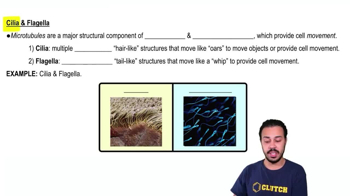Mark the following statements about the cytoskeleton as true or false. If a statement is false, correct it to make a true statement.
Microtubules are hollow tubes that align organelles and shuttle them to their proper places in the cell.
 Verified step by step guidance
Verified step by step guidance Verified video answer for a similar problem:
Verified video answer for a similar problem:



 6:05m
6:05mMaster Introduction to the Cytoskeleton with a bite sized video explanation from Bruce Bryan
Start learning